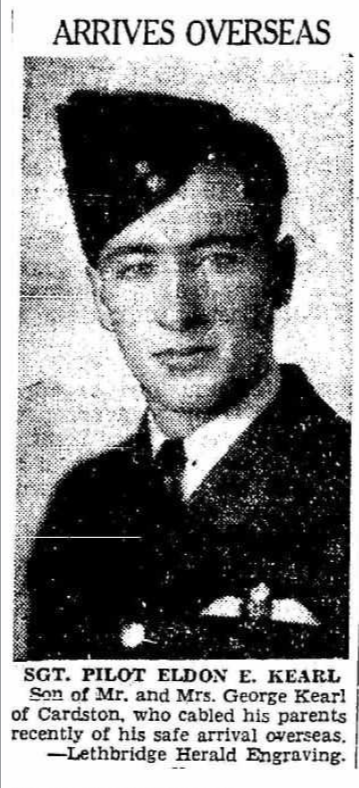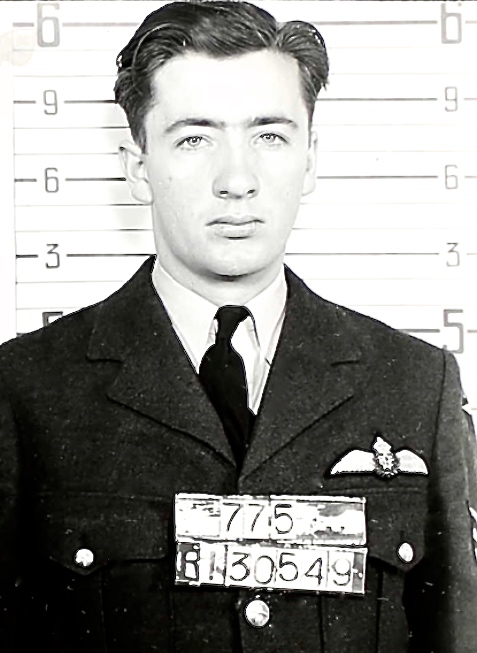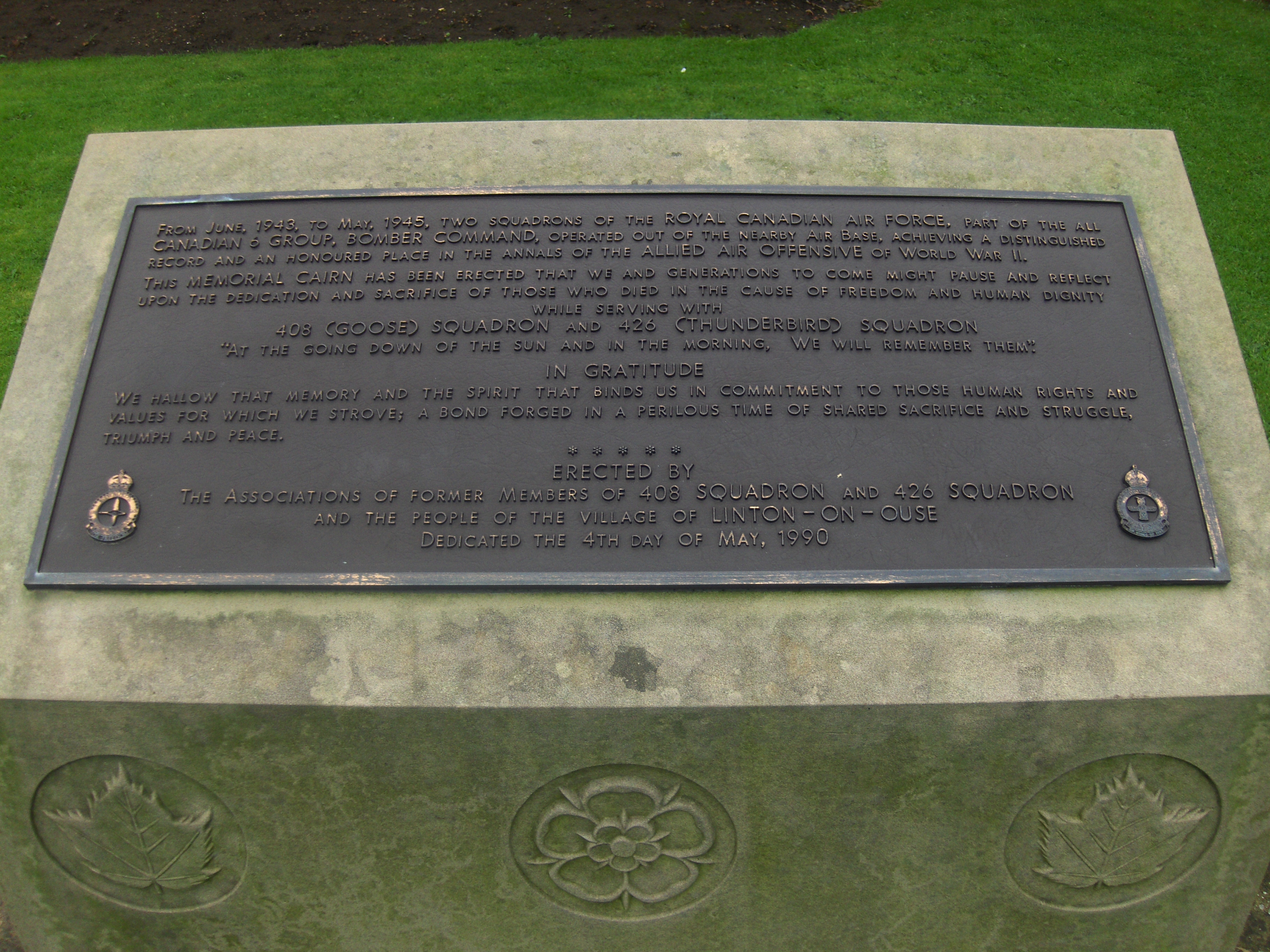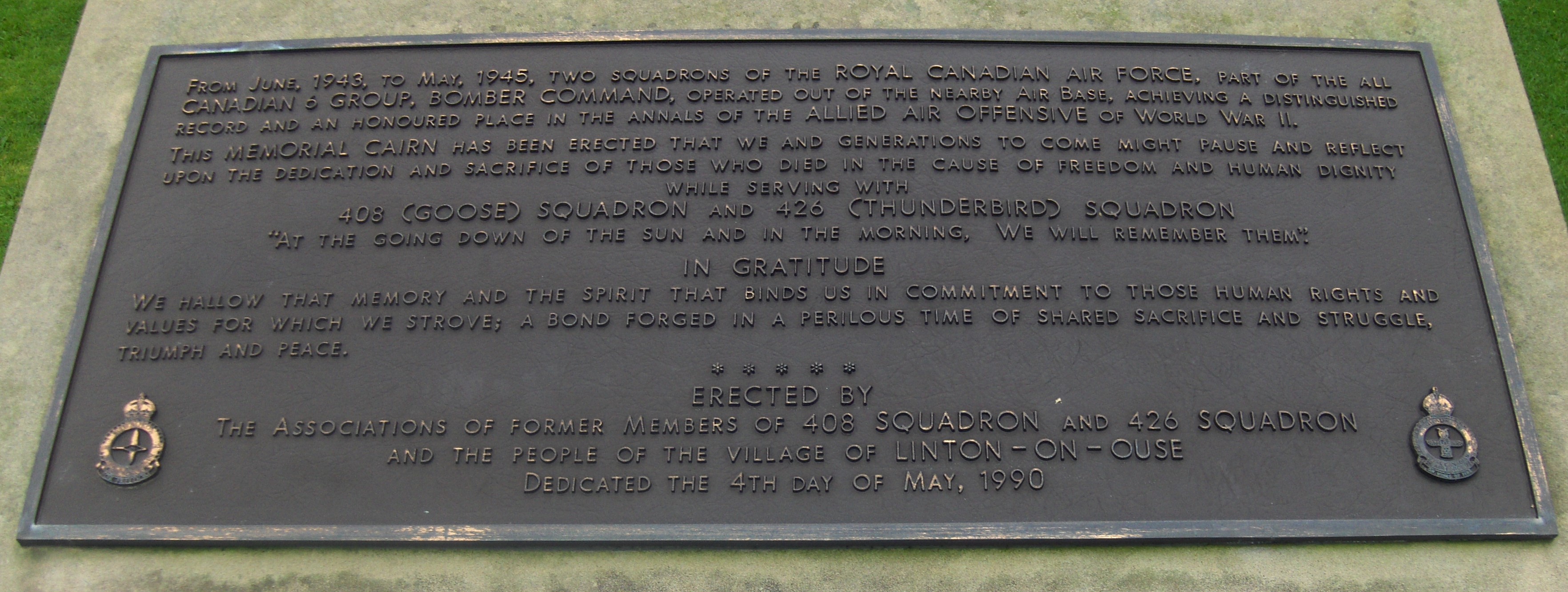| Born on 26 January 1920 in Cardston, Alberta. His parents were both born in Montana, USA, his father in Utah and his mother in Butte. They moved to Cardston, Alberta, and during their time there, his father became the town manager. He was also a farmer. Eldon had five sisters and four brothers, a baby son was also born and died in 1918. A younger brother of Eldon, Harold, was also training to be a pilot like his brother. Eldon gained his Senior Matric after four years at Cardston High School. His sports interests were Soft ball, jumping, skiing, skating, running, and basketball. He worked as a farmer for one year and then as a tailor for seven months in 1940 at Cardston Tailors. Before then, he had worked with his father on the farm at home. When he left for Europe, Eldon looked up his previous employer, the tailor. He shook him by the hand and said "Bill, I probably won't see you again". |
| He spent a short time at Sarcee Camp in July 1941 as a gunner with 93 Battery,18 Fld Brigade, RCA, at McLeod, Alberta. He only trained twice a week and had two weeks at the camp. He was soon discharged because he was called up for training in their under 21 year old classes for four months, before enlisting. Eldon enlisted on 5 September 1941 in Edmonton and Embarked from New York for the U.K. on 22 November 1942. On arrival he went to 3 PRC 1 December 1942, 15 (P)AFU, 23 OTU 9 February1943, 1659 CU 22 June 1943 and 408 Squadron 17 July 1943. |
| He went missing on his 18th operation. Back at home in 1950 a lake in Northern Alberta formerly known as Mukeg Lake was re-named Kearl Lake in his honour. Today it is the site of the Kerl oil sands project, which will operate for more than forty years and will recover an estimated 4.6 billion barrels of bitumen. Eldon’s younger brother Harold was home on leave when the telegram arrived informing them that Eldon was missing. Two weeks later and having received his pilot’s wings, his parents said goodbye to another son. Harold had promised himself that he would find Eldon’s grave one day and after completing his 17 operations, stayed on, instead of being demobbed. He joined Transport Command, flying passengers and freight across north west Europe, hoping one day he could get to Berlin where he now knew Eldon would be. On 25 February 1946 Harold eventually managed to land just outside Berlin, now unsafe and in the hands of the Russians, but with much help managed to reach the village of Bugk where a kind German farmer had seen where Eldon’s aircraft had crashed and had buried the men and planted flowers on their graves. Harold stood silently at his brother’s grave, two years after his death, said a prayer, stood back and saluted. Harold, aged 90, was invited by Imperial Oil, the company carrying out the bitumen mining, to become a representative for the family in the project. Gary Silgard, the project's operations manager stated "It is appropriate that those who will enjoy future benefits are reminded of the sacrifices made for our freedom by the men and women of the Canadian armed forces. It is an honour for us at Imperial to be associated with the Kearl name". Imperial Oil have also named service roads for the works after his fellow crew. |




